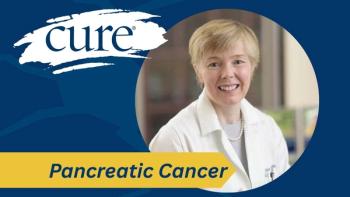
USPSTF Broadens Recommendation to Include More Colorectal Cancer Screening Tests
A wide-range of colon cancer screening options will be available and insured for patients, thanks to recent USPSTF recommendations.
Colorectal cancer is the second leading cause of cancer-related deaths in the United States, with an estimated 49,000-plus fatalities projected in 2016. But still, many of people who should be getting screened for the disease do not. Last week, the United States Preventative Services Task Force (USPSTF) took a step to change that.
In an update of the 2008 recommendation, the 2016 USPSTF recommendation reviewed a wider variety of colorectal cancer screening tests and gave all tests an “A” grade designation for patients between the ages of 50 and 75.
The updated recommendation reviewed the safety and efficacy of colonoscopy, flexible sigmoidoscopy, computed tomography colonography, the guaiac-based fecal occult blood test, the fecal immunochemical test, the multitargeted stool DNA test and the methylated SEPT9 DNA test.
“As such, the screening tests are not presented in any preferred or ranked order,” according to the recommendation statement published online in The Journal of American Medical Association (JAMA). “[R]ather, the goal is to maximize the total number of persons who are screened because that will have the largest effect on reducing colorectal cancer deaths.”
Under the Affordable Care Act, private insurance companies must alter their plans in the coming year to cover the screenings without any out-of-pocket fees. Patients on Medicare will be fully insured as well, as long as their plan started after March 2010.
Judy Yee, chair of the American College of Radiology (ACR), said that increased access to screening has the potential to drastically reduce the amount of deaths from colorectal cancer each year.
“If more patients come in for screening, we would be able to identify those patients with the significant precursor polyp and send them to have them removed,” Yee said in an interview with CURE. “Additionally, if more people undergo virtual colonoscopy, we would be able to identify colorectal cancers at an earlier stage when they are more likely curable.”
Yee said that more people are still getting “traditional” colonoscopies compared with virtual colonoscopies, but with about one-third who are eligible for screening not being tested, it is clear that other options that are “more appealing for patients” are needed.
Cynthia Moran, the executive vice president of Government Relations, Economics and Health Policy at ACR, said that there are a number of factors that prevent individuals from getting colonoscopies, including being uncomfortable with the sedation and invasiveness of the test.
By recommending more testing methods such as virtual colonoscopy, which is less invasive and does not require sedation, the USPSTF hopes that more people would get this potentially life-saving screening.
“About one-third of eligible adults in the United States have never been screened for colorectal cancer, and offering choice in colorectal cancer screening strategies may increase screening uptake,” according to the USPSTF statement.
Moran is confident that the new guidelines will do just that.
“Ultimately, with patient preference and implementation of coverage of non-invasive screening tests, it will result in increased screening adherence and save many lives,” she said.





